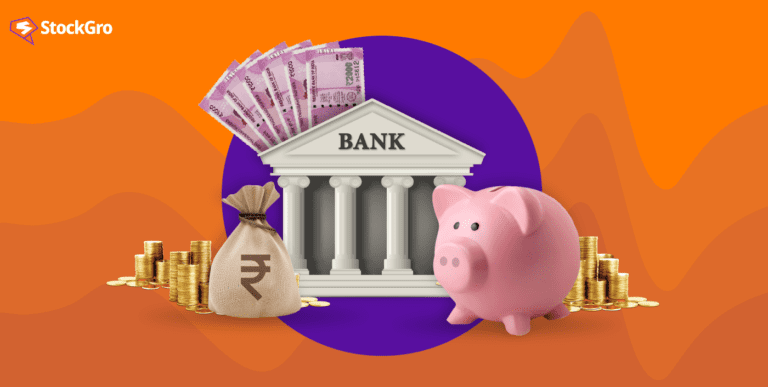
Have you watched the ‘Wolf of Wall Street’? Besides Leonardo DiCaprio’s charm and the illegal shenanigans consuming Wall Street, the film very vehemently explained the pump and dump strategy.
Is pump and dump illegal in India? Yes. Even then, Dalal Street has had its fair share of ‘pump-and-dumps’ in the past. Why? Because some individuals love fast money. And what better way to earn than market manipulation?
Gotta pump those numbers up. Those are rookie numbers in this racket.
Mark Hanna, Wolf of Wall Street
Time to dive into the infamous pump-and-dump strategy and why it is illegal in India?
What is Pump and dump scheme?
To put it simply, ‘pump-and-dump’ is a strategy to manipulate the stock market. It consists of two elements – pump i.e., to artificially inflate or hike the stock price through false and misleading information, and, dump i.e., selling those shares at the inflated price.
Wait, doesn’t it sound similar to the usual “buy low and sell high” method that investors use? True, but there’s a key difference. For one, in pump and dump strategy, the stock price is inflated artificially. How? By spreading false information, creating unnecessary excitement around the stock, or providing false recommendations.
And while experienced traders don’t fall prey, it’s the newbies mostly, that believe these recommendations. After all, it’s easier to follow an advice blindly than to investigate it before making a call.
Read Also: How to Invest in US Stocks from India?
To understand this strategy further, let’s consider a simple example:
Note: In the stock market, operators are those who increase the volume of stocks of a particular company to increase the overall share price of company stock. This activity is legal if stock exchanges are made aware of it. Otherwise, it’s an illegal activity.
Now, let’s dive into the example:
Assume an operator has bought 10,000 shares of company ‘ABC’ at a share price of Rs. 10. Therefore, he has invested Rs. 1,00,000 in the company. Being an operator, he wants to increase the share price. But without the knowledge of stock exchanges. Simplest way to do so is by spreading false “positive” information about ABC. The positive news can be either a big leader acquiring ABC or the company signing a high-value contract. By spreading this news, investors’ interest in the shares peak. Investors/traders begin buying ABC shares, leading to a hike in stock price. Say from Rs. 10 to Rs. 20, 25…etc. Let’s assume the price hikes to Rs. 30. Now, the operator has decided to sell his shares. This renders him a profit of Rs. 2 lakh. While the investors are left with shares of an overpriced and overbought stock.
A clear strategy of market manipulation for personal gains!
Why are small-cap companies the common target of pump and dump strategy?
Small-cap or small-capitalisation companies in India are those with an overall market capitalisation of less than Rs. 5,000 crore. Investors tend to bet big on such companies due to their high growth potential.
Now, let’s come back to the pump and dump strategy. Both Investopedia and ETMoney state that small-cap and micro-cap (Rs. 100-500 crore valuation) are the common target of this strategy.
This may not come as a surprise. But still, let’s dwell into some possible reasons:
- Although capable of high growth, small-cap companies have limited press, news and corporate information open to public
- More often than not, these companies are not part of an analyst’s radar. And so, there may not exist any elaborate reports on their financials
- Their trading volumes are relatively low
In a nutshell, small- and micro-caps are the perfect entities for corporates to pump and dump!
When creating such hype around the chosen stock, false information is spread through sophisticated channels. Let’s understand how these channels of communication function.
You may also like: The world of ETFs – explained in simple terms
Creating hype around stocks a.k.a “pump”
Time for some history. When technology was not so evolved, there was a lot of cold-calling to attract investors. Thus, fraudsters would get phone number leads of potential investors. They would call these investors and instigate them to put money in a particular stock. How? By convincing them that the stock would reap high profits.
Today, cold calling has become obsolete, especially in pump-and-dump. And investors no longer succumb to such false trails. Thus, fraudsters have started using creative ways to pump the value of stocks. These include –
- Spreading fake news through well-constructed emails and SMS
- Conducting webinars targeting newbie investors
- Running dedicated YouTube channels, with clickbait titles like “Best stocks to invest 2023” or “This stock will give 20% ROI”, etc.
- Using social media platforms like Twitter, Facebook, Instagram and Telegram to spread fake news
Of course, as an investor/trader, you may not take some unverified hoax seriously. But the situation changes once the stock becomes highly discussed in the trading community. Thus, “pumping” becomes a crucial part of this infamous strategy.
Arshad Warsi Ban: A case study
Remember when Arshad Warsi and his wife Maria Goretti were banned from investing in Indian markets? Well, the Securities and Exchange Board of India (SEBI) took the call. Apparently, because Warsi and his wife were involved in stock price manipulation.
Ten guesses why? They used the same pump-and-dump strategy for hiking the price of two shares – Sadhna Group and Sharpline Broadcast Ltd. in July 2022.
Well, Warsi and his wife were not directly involved in executing this scam. But they definitely contributed by increasing the share’s volume. Let’s look at some specifics of the case:
- Sebi discovered that two unnamed YouTube channels uploaded fake and misleading videos about both stocks. Not to sabotage the firms, but to falsely pump their share price.
- The videos claimed that Adani Group was all set to take over Sadhna and enter film production by collaborating with a giant American corporation. This deal would be worth a gigantic Rs.1,100 crore.
- As predicted, these videos gained millions of views via paid marketing tactics.
- This being positive news, investors started bidding their money on these shares.
- The share price increased and the fraudsters spreading fake news gained massive profit by selling-off their shares.
Result: Innocent investors were left with shares of an overvalued stock. All because of a hoax.
As many as 31 entities were involved in this scam, including Warsi and his wife, making profits worth Rs.29.43 lakh and Rs.37.58 lakh, respectively.
Of course, Sebi did seize their profits and banned the duo from the market. And this is precisely the punishment you receive for indulging in such acts. Maybe along with a huge penalty.
The ultimate take-away is this: Today, a lot of market information is available online. From both credible and fake sources. Whatever the case, it is important for you to do a background check on the stock.
FOMO on stock profits definitely hurts. But not as much as getting influenced by fraudsters and investing in an overvalued stock!

